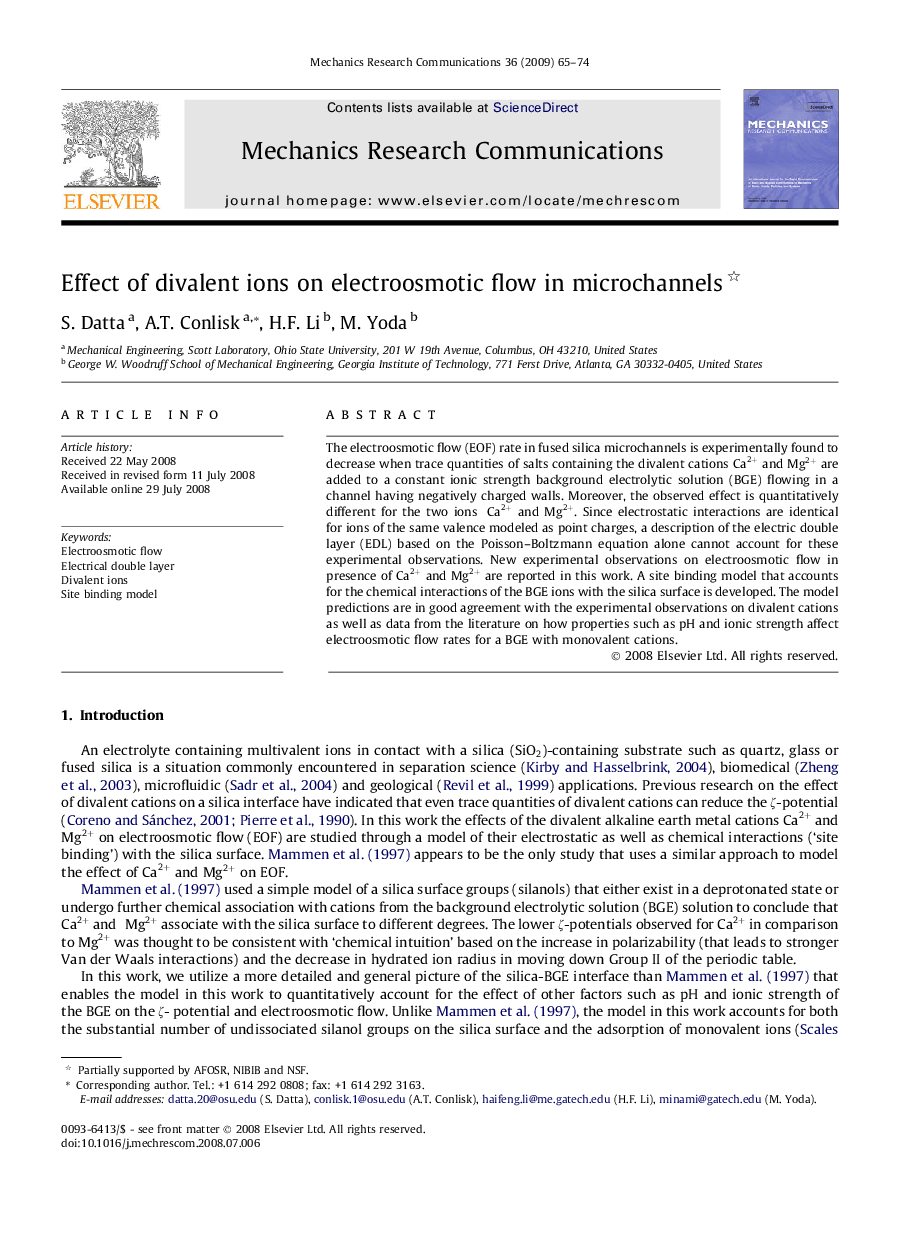| Article ID | Journal | Published Year | Pages | File Type |
|---|---|---|---|---|
| 801832 | Mechanics Research Communications | 2009 | 10 Pages |
The electroosmotic flow (EOF) rate in fused silica microchannels is experimentally found to decrease when trace quantities of salts containing the divalent cations Ca2+Ca2+ and Mg2+Mg2+ are added to a constant ionic strength background electrolytic solution (BGE) flowing in a channel having negatively charged walls. Moreover, the observed effect is quantitatively different for the two ions Ca2+ and Mg2+Mg2+. Since electrostatic interactions are identical for ions of the same valence modeled as point charges, a description of the electric double layer (EDL) based on the Poisson–Boltzmann equation alone cannot account for these experimental observations. New experimental observations on electroosmotic flow in presence of Ca2+Ca2+ and Mg2+Mg2+ are reported in this work. A site binding model that accounts for the chemical interactions of the BGE ions with the silica surface is developed. The model predictions are in good agreement with the experimental observations on divalent cations as well as data from the literature on how properties such as pH and ionic strength affect electroosmotic flow rates for a BGE with monovalent cations.
